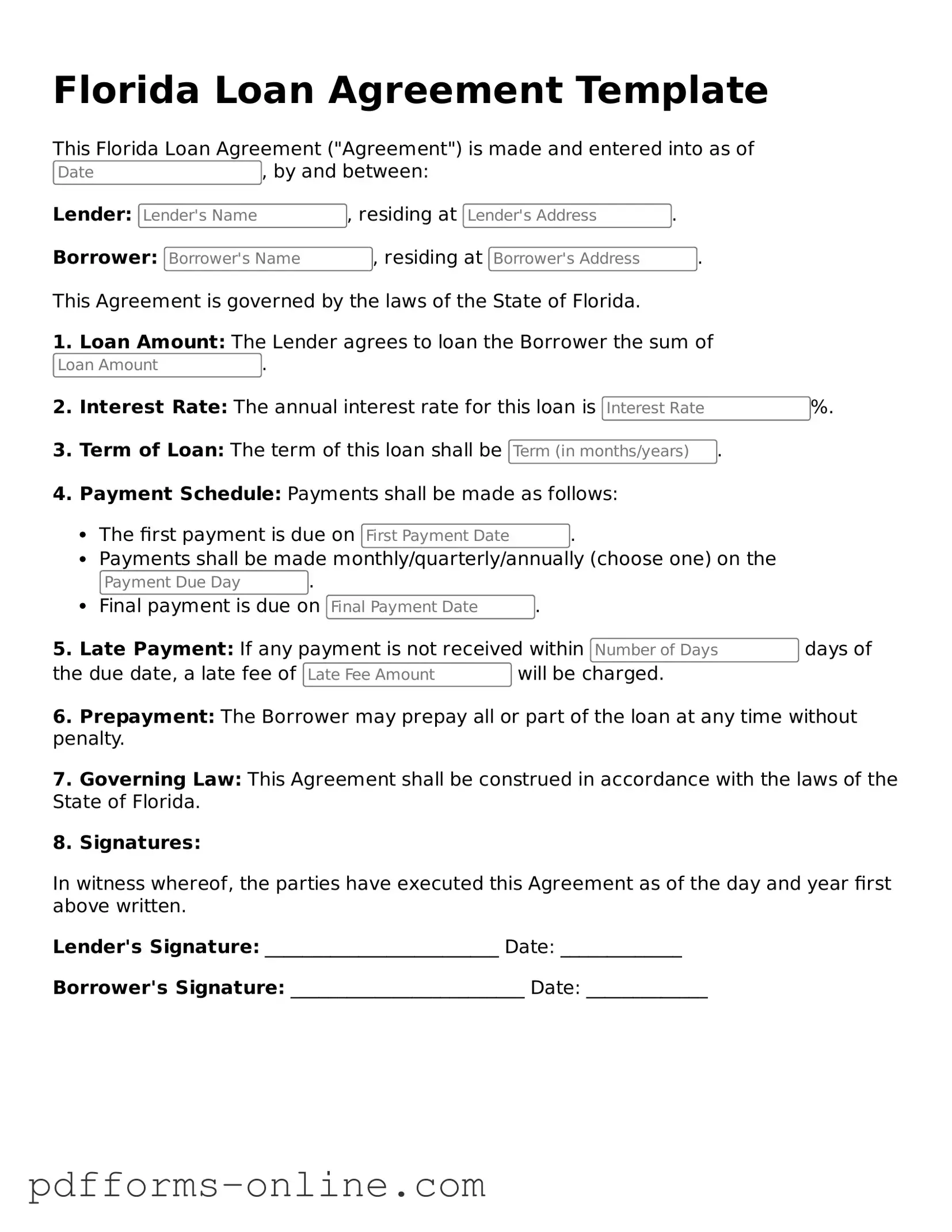The Florida Promissory Note is similar to the Loan Agreement form in that both documents outline the terms of a loan. A promissory note serves as a written promise from the borrower to repay the lender a specific amount of money, usually with interest, by a certain date. While the Loan Agreement may detail additional terms such as collateral and repayment schedules, the Promissory Note focuses primarily on the borrower's commitment to repay the loan amount. Both documents are legally binding and can be enforced in court if necessary.
The Florida Mortgage Agreement is another document closely related to the Loan Agreement. This form is used when a borrower secures a loan by placing a lien on real property. Like the Loan Agreement, the Mortgage Agreement includes terms regarding repayment and interest rates. However, it specifically outlines the rights of the lender to take possession of the property if the borrower defaults on the loan. This document provides additional security for the lender, making it a critical part of real estate transactions.
The Florida Security Agreement is akin to the Loan Agreement in that it establishes terms for securing a loan with collateral. This document specifies what assets the borrower is using as security for the loan, such as equipment or inventory. In a Loan Agreement, collateral may also be mentioned, but the Security Agreement focuses specifically on the details of the collateral and the lender's rights in case of default. Both documents aim to protect the lender's interests while providing the borrower access to funds.
The Florida Lease Agreement shares similarities with the Loan Agreement, particularly in terms of payment terms and obligations. A Lease Agreement outlines the rental terms for property, including the amount due and the schedule for payments. Both documents require the borrower or tenant to adhere to specific financial commitments. While a Loan Agreement typically involves a loan for cash, a Lease Agreement involves renting property, but both create legally binding obligations between parties.
The Florida Installment Sale Agreement is comparable to the Loan Agreement in that both involve a buyer and seller where payment is made over time. In an Installment Sale Agreement, the buyer agrees to pay for an item in installments, similar to how a borrower repays a loan. This document includes terms about the payment schedule, interest, and what happens if payments are missed. Both agreements facilitate the transfer of property while establishing clear payment terms.
The Florida Personal Guarantee is another document that relates to the Loan Agreement. This form is often used when a business loan is involved, where an individual agrees to personally repay the loan if the business defaults. Similar to a Loan Agreement, it outlines the obligations of the borrower. The Personal Guarantee adds an additional layer of security for the lender, ensuring that personal assets can be pursued if necessary, thus reinforcing the commitment to repay the loan.
Furthermore, it is essential for tenants and landlords to understand various legal documents when entering into rental agreements. One such important document is the New York Residential Lease Agreement, which not only defines the lease terms but also ensures that both parties are aware of their rights and obligations. For more information on this essential agreement, you can visit https://documentonline.org/blank-new-york-residential-lease-agreement.
The Florida Commercial Loan Agreement is similar to the Loan Agreement but is specifically tailored for business transactions. This document includes terms regarding the loan amount, interest rate, repayment schedule, and any fees associated with the loan. Both agreements serve the same purpose of formalizing a loan, but the Commercial Loan Agreement often contains additional clauses relevant to business operations, such as covenants that the borrower must follow.
Lastly, the Florida Line of Credit Agreement resembles the Loan Agreement in that it provides a borrower access to funds up to a specified limit. This agreement allows borrowers to withdraw money as needed, similar to a Loan Agreement where a lump sum is provided upfront. The terms of repayment, interest, and fees are also outlined in both documents. However, a Line of Credit Agreement typically offers more flexibility in borrowing and repayment compared to a traditional Loan Agreement.
